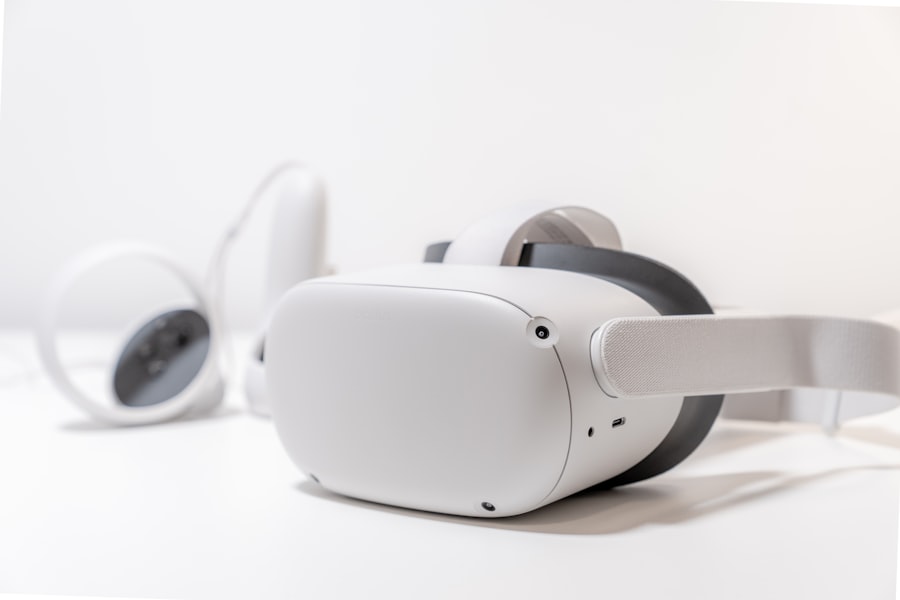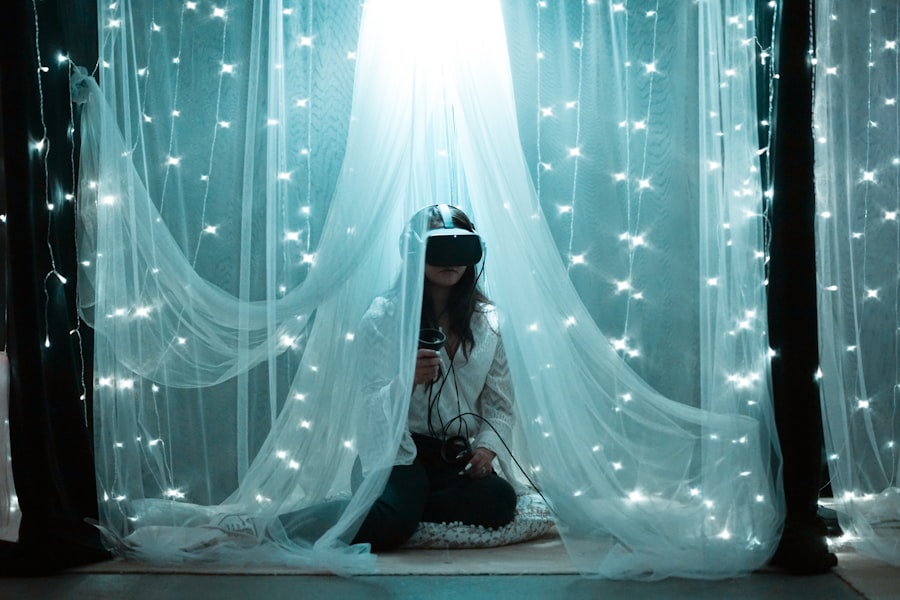The term “metaverse” has gained significant traction in recent years, often described as a collective virtual space that merges physical and digital realities. This expansive universe is not merely a single platform but rather an interconnected network of virtual environments where users can interact with each other and digital objects in real-time. The concept draws from science fiction, particularly from works like Neal Stephenson’s “Snow Crash” and Ernest Cline’s “Ready Player One,” which envision immersive digital worlds where individuals can escape the limitations of the physical realm.
In essence, the metaverse represents a convergence of various technologies, including virtual reality (VR), augmented reality (AR), blockchain, and social media, creating a rich tapestry of experiences that transcend traditional boundaries. At its core, the metaverse operates on the principles of user-generated content and social interaction. Users can create avatars to represent themselves, engage in activities ranging from gaming to attending virtual concerts, and even conduct business transactions.
The underlying technology that powers these experiences includes advanced graphics rendering, real-time data processing, and cloud computing, which together facilitate seamless interactions within these digital spaces. Blockchain technology plays a crucial role in establishing ownership and authenticity of digital assets, allowing users to buy, sell, and trade virtual goods securely. As the metaverse continues to evolve, it promises to redefine how we perceive social interactions, commerce, and entertainment in a digitally interconnected world.
Key Takeaways
- The metaverse is a collective virtual shared space, created by the convergence of virtually enhanced physical reality and physically persistent virtual reality.
- The metaverse has the potential to revolutionize industries and economies by creating new opportunities for virtual experiences, transactions, and interactions.
- Privacy, security, and regulation are key challenges in the metaverse that need to be addressed to ensure a safe and trustworthy environment for users.
- Virtual reality and augmented reality play a crucial role in shaping the metaverse by providing immersive and interactive experiences for users.
- Building a sustainable and inclusive metaverse community is essential for creating a diverse and accessible virtual world for all users.
The Impact of the Metaverse on Industries and Economies
The metaverse is poised to revolutionize various industries by creating new avenues for engagement and commerce. In the realm of entertainment, for instance, virtual concerts and immersive gaming experiences are already reshaping how audiences consume content. Major artists like Travis Scott and Ariana Grande have hosted virtual concerts within platforms like Fortnite, attracting millions of viewers and generating substantial revenue through ticket sales and in-game purchases.
This shift not only enhances the fan experience but also opens up new revenue streams for artists and game developers alike. The gaming industry, in particular, stands to benefit immensely from the metaverse’s growth, as it allows for expansive worlds where players can interact in ways previously unimaginable. Beyond entertainment, the metaverse is making significant inroads into sectors such as education and training.
Virtual classrooms and training simulations offer immersive learning experiences that can enhance understanding and retention of complex subjects. For example, medical students can practice surgical procedures in a risk-free environment using VR simulations, while corporate training programs can utilize AR to provide hands-on experience with machinery or software applications. This innovative approach to education not only makes learning more engaging but also prepares individuals for real-world challenges by providing practical experience in a controlled setting.
As industries continue to explore the potential of the metaverse, its impact on economies will likely be profound, driving job creation and fostering new business models.

As the metaverse expands, it brings with it a host of challenges related to privacy, security, and regulation that must be addressed to ensure a safe and equitable environment for users. Privacy concerns are paramount, as users often share personal information when creating profiles or engaging in transactions within these virtual spaces. The collection and storage of this data raise questions about how it is used and who has access to it.
For instance, incidents of data breaches in traditional online platforms highlight the potential risks associated with user information being exploited for malicious purposes. As such, establishing robust privacy policies and data protection measures will be essential for fostering trust among users in the metaverse. Security is another critical issue that cannot be overlooked.
The decentralized nature of many metaverse platforms can make them vulnerable to cyberattacks, fraud, and other malicious activities. Users may fall victim to scams involving fake digital assets or phishing attempts designed to steal sensitive information. To combat these threats, developers must implement advanced security protocols and educate users about safe practices when navigating these digital environments.
Additionally, regulatory frameworks will need to evolve to address the unique challenges posed by the metaverse. Governments and regulatory bodies must collaborate with industry stakeholders to create guidelines that protect users while promoting innovation. This balance will be crucial in ensuring that the metaverse remains a safe space for exploration and interaction.
The Role of Virtual Reality and Augmented Reality in the Metaverse
| Metrics | Virtual Reality | Augmented Reality |
|---|---|---|
| Immersive Experience | Highly immersive | Partially immersive |
| Interaction with Physical Environment | Limited | Integrates with physical environment |
| Hardware Requirements | Headset, controllers | Smartphone, AR glasses |
| Applications | Gaming, simulations, training | Navigation, education, retail |
| Metaverse Integration | Integral part of metaverse | Enhances metaverse experience |
Virtual reality (VR) and augmented reality (AR) are foundational technologies that underpin the metaverse’s immersive experiences. VR creates entirely simulated environments that users can explore through headsets equipped with motion tracking capabilities. This technology allows individuals to engage with digital worlds as if they were physically present, enhancing the sense of presence and immersion.
For example, platforms like Oculus Rift and HTC Vive offer users the ability to step into fantastical realms or realistic simulations that can transport them far beyond their physical surroundings. The applications of VR extend beyond gaming; industries such as real estate are utilizing VR for virtual property tours, allowing potential buyers to experience homes without leaving their current location. On the other hand, augmented reality overlays digital information onto the real world, enriching everyday experiences with interactive elements.
AR applications like Pokémon GO have demonstrated how this technology can blend physical spaces with digital content, encouraging users to explore their surroundings while engaging with virtual characters. In the context of the metaverse, AR can enhance social interactions by allowing users to share experiences in real-time while still being physically present with one another. For instance, friends could gather in a park while using AR glasses to view shared digital art installations or play interactive games together.
As both VR and AR technologies continue to advance, their integration into the metaverse will create increasingly sophisticated experiences that blur the lines between reality and the digital realm.
Building a Sustainable and Inclusive Metaverse Community
Creating a sustainable and inclusive metaverse community is essential for ensuring that all users feel welcome and valued within these digital spaces. Inclusivity involves recognizing and addressing the diverse needs of users from various backgrounds, including different cultures, abilities, and socioeconomic statuses. Developers must prioritize accessibility features in their platforms to accommodate individuals with disabilities, ensuring that everyone can participate fully in the metaverse experience.
This could include voice commands for navigation or customizable avatars that reflect a wide range of identities. Sustainability is another critical aspect that must be considered as the metaverse grows. The environmental impact of data centers powering these virtual worlds cannot be ignored; therefore, companies should strive to adopt eco-friendly practices such as utilizing renewable energy sources or implementing energy-efficient technologies.
Additionally, fostering a culture of respect and collaboration within metaverse communities is vital for creating a positive environment where users can connect meaningfully. Initiatives such as community guidelines that promote respectful behavior and discourage harassment will help cultivate a sense of belonging among participants. By prioritizing inclusivity and sustainability, stakeholders can work together to build a metaverse that reflects shared values while providing enriching experiences for all.
Opportunities for Businesses and Entrepreneurs in the Metaverse

The metaverse presents a wealth of opportunities for businesses and entrepreneurs looking to innovate and expand their reach in a rapidly evolving digital landscape. One significant avenue is the creation of virtual storefronts where brands can showcase their products in immersive environments. Companies like Nike have already begun experimenting with virtual retail spaces where customers can browse items using their avatars or even try on clothing virtually before making a purchase.
This approach not only enhances customer engagement but also allows brands to tap into new demographics who may prefer shopping in virtual environments over traditional brick-and-mortar stores. Moreover, entrepreneurs can leverage the metaverse for marketing campaigns that resonate with younger audiences who are increasingly drawn to digital experiences. Interactive advertising within virtual worlds can capture attention more effectively than traditional methods by offering engaging content that encourages participation rather than passive consumption.
For instance, brands could host virtual events or challenges that incentivize users to interact with their products in creative ways. Additionally, opportunities exist for content creators who can develop unique experiences or digital assets for sale within the metaverse economy. From virtual art galleries showcasing NFTs (non-fungible tokens) to immersive storytelling experiences that captivate audiences, the potential for innovation is vast.
Exploring the Social and Cultural Implications of the Metaverse
The emergence of the metaverse carries profound social and cultural implications that warrant careful consideration as society navigates this new frontier. One significant aspect is how virtual interactions may reshape human relationships and community dynamics. As individuals increasingly engage with one another through avatars rather than physical presence, questions arise about authenticity and connection in these interactions.
Culturally, the metaverse has the potential to democratize access to art, entertainment, and education by breaking down barriers imposed by geography or socioeconomic status. Virtual galleries can showcase diverse artists from around the world without requiring physical space or resources typically associated with traditional exhibitions.
Similarly, educational institutions can offer courses accessible to anyone with an internet connection, fostering global collaboration among learners from different backgrounds. However, this democratization also raises concerns about cultural appropriation and representation within these digital spaces; ensuring that diverse voices are heard and respected will be crucial for fostering an inclusive metaverse culture.
The Future of the Metaverse: Trends and Predictions
Looking ahead, several trends are likely to shape the future of the metaverse as it continues to evolve into a more integrated part of daily life. One prominent trend is the increasing convergence of various technologies such as AI (artificial intelligence), machine learning, and blockchain within metaverse platforms.
Another prediction involves the rise of hybrid experiences that blend physical and digital elements seamlessly. As businesses explore ways to integrate their physical operations with virtual counterparts—such as hosting live events alongside virtual counterparts—users will benefit from richer experiences that transcend traditional boundaries between online and offline interactions. Furthermore, as more individuals embrace remote work arrangements post-pandemic, virtual workplaces within the metaverse may become commonplace; companies could establish collaborative environments where employees interact as avatars while working on projects together.
In conclusion, while challenges remain regarding privacy concerns or regulatory frameworks surrounding this emerging landscape—opportunities abound for innovation across industries as we venture further into this uncharted territory known as “the metaverse.”
The concept of parallel worlds within the metaverse is a fascinating topic that has sparked much debate among enthusiasts and skeptics alike. In a recent article on metaversum.it, the author delves into the possibility of these alternate realities existing within the metaverse. This article explores the implications of such a phenomenon and raises thought-provoking questions about the nature of reality in virtual spaces. It is a must-read for anyone interested in the potential of the metaverse to revolutionize our understanding of the world around us.
FAQs
What is the metaverse buzzword?
The metaverse buzzword refers to the increasing popularity and discussion surrounding the concept of the metaverse, a collective virtual shared space, created by the convergence of virtually enhanced physical reality and physically persistent virtual reality.
What is the metaverse?
The metaverse is a collective virtual shared space, created by the convergence of virtually enhanced physical reality and physically persistent virtual reality. It is a concept that has gained attention in recent years due to advancements in technology and the increasing integration of virtual and augmented reality experiences.
Why is the metaverse a buzzword?
The metaverse has become a buzzword due to the increasing interest and investment in virtual and augmented reality technologies, as well as the potential for new forms of social interaction, entertainment, and commerce within a virtual space.
The metaverse is related to virtual reality and augmented reality in that it represents a collective virtual shared space that is created by the convergence of these technologies. Virtual reality provides immersive, computer-generated environments, while augmented reality overlays digital information onto the physical world. The metaverse combines elements of both to create a persistent virtual space.
What are some examples of the metaverse in popular culture?
Popular culture references to the metaverse include the novel “Snow Crash” by Neal Stephenson, the film “Ready Player One” directed by Steven Spielberg, and the video game “Second Life.” These examples explore the concept of a virtual shared space and the potential implications of a fully realized metaverse.

Leave a Reply